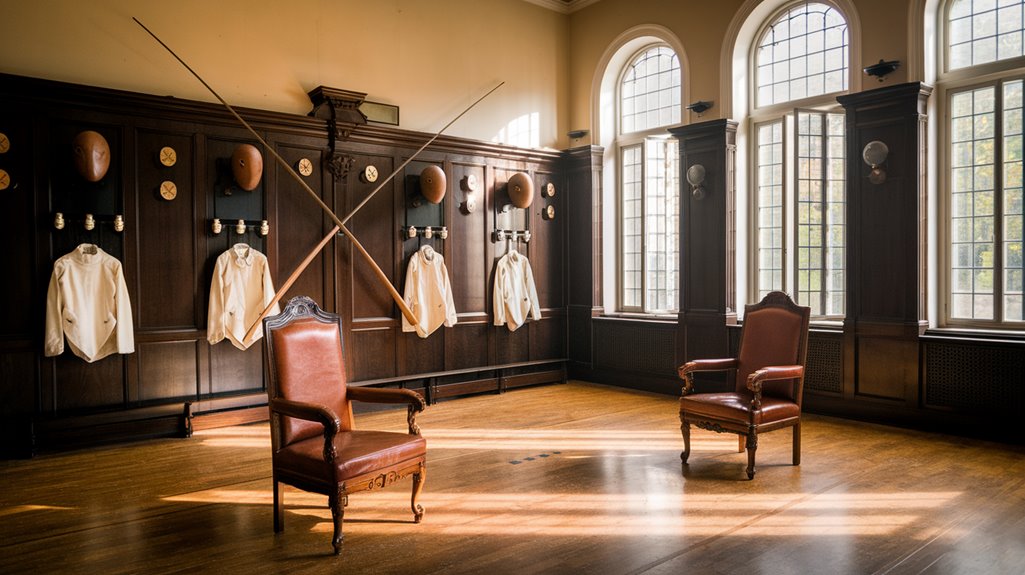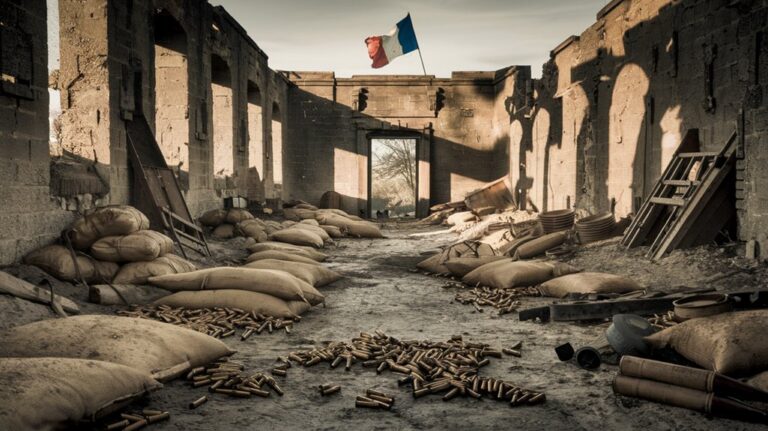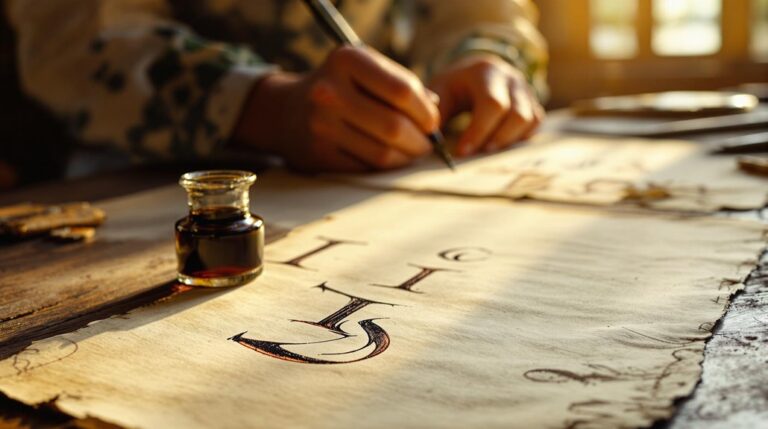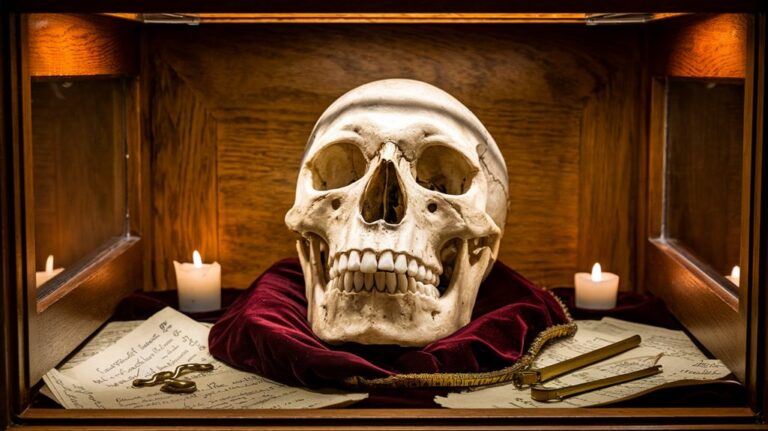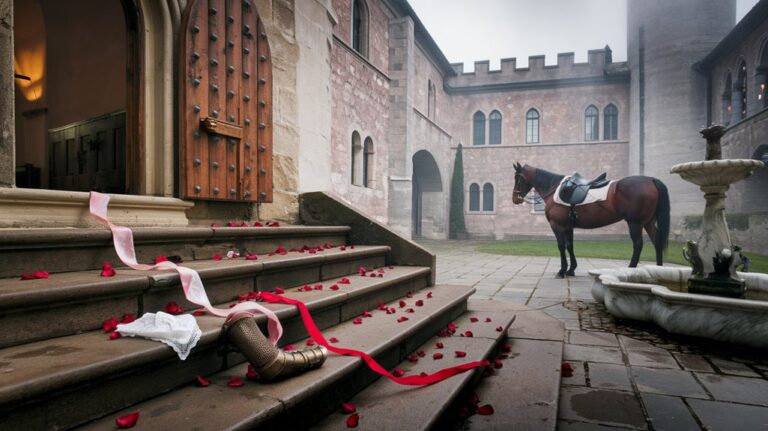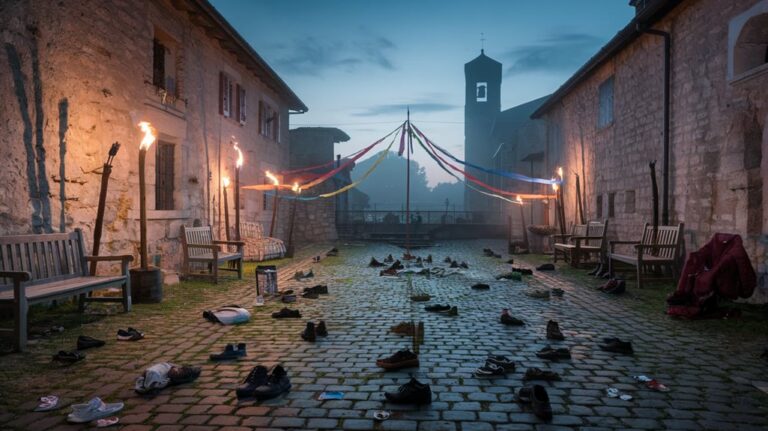Mensur Duels: Germany’s Face-Scarring Tradition
You've probably heard of dueling scars, those distinctive marks that once symbolized status and bravery in German society, but you might not know the fascinating tradition behind them. Mensur dueling wasn't about killing or even winning—it was about standing your ground while someone swung a razor-sharp blade at your face. These ritualized combat sessions, practiced by university students since the 1500s, transformed what many would consider disfigurement into a coveted badge of honor. The story of how these controlled sword fights shaped German culture and society reveals an intriguing intersection of violence, tradition, and social prestige.
The Origins of Mensur
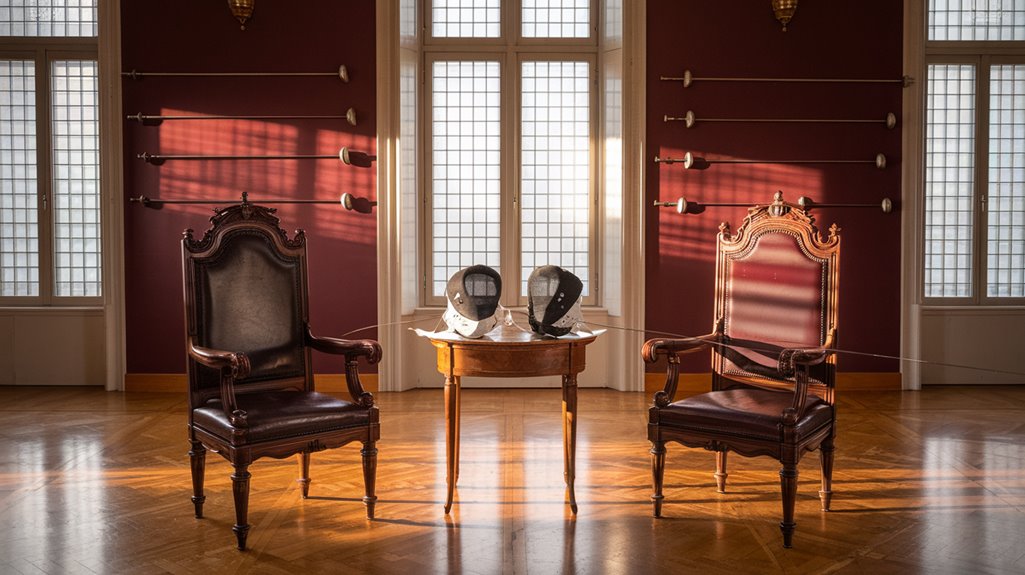
While many modern Germans might cringe at the thought, Mensur fencing emerged in 16th-century Germany as a noble tradition among university students. Known as "Mensurfechten" (fencing in confined spaces), this dueling culture emphasized controlled combat between young nobles who'd face off using pointed sabers called schlagers. Drawing first blood was a crucial element, as these matches served as a means of resolving conflicts.
The historical significance of Mensur traces back to when the court sword was an essential part of aristocratic dress in the 15th century. You'd find duelists wearing distinctive protective gear, including metallic netted eyepieces, leather chest guards, and thick neck scarves. During the Third Reich period, these traditional duels continued in secret, with over 100 duels recorded in Freiburg during World War II.
Initially, the practice allowed for mobility and evasive maneuvers, with participants freely moving to dodge strikes. This dynamic style would later change dramatically in the 1850s, when new regulations transformed Mensur into a more static form of combat.
Scars of Honor
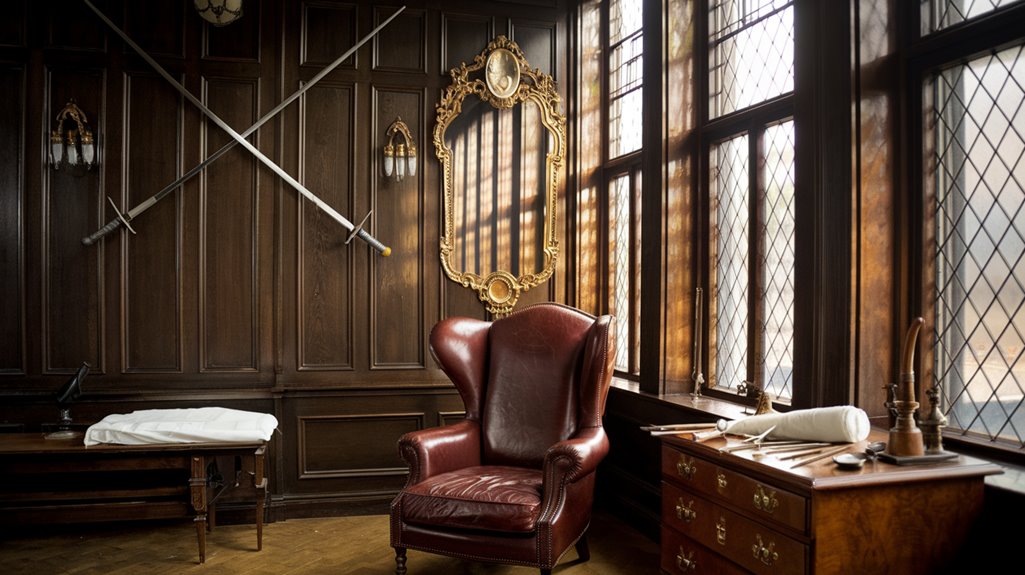
Pride and prestige marked the facial scars of Mensur duelists, who bore these distinctive marks primarily on the left side of their faces. As a right-handed fencer, you'd typically strike your opponent's left temple, creating wounds that weren't life-threatening but left permanent reminders of courage. Students used Korbschläger swords with their distinctive basket guards in these academic duels.
The scars' significance extended far beyond the dueling grounds. You'd find these marks celebrated across German society, with prominent figures like Otto von Bismarck judging a man's worth by his facial scars. These ritualized duels took place under strict safety protocols, with doctors present to monitor the matches.
Some men even went as far as faking these badges of honor, either through self-inflicted cuts or paid medical procedures. In the social hierarchy, these scars elevated your status, making you more attractive to potential wives and marking you as part of the academic elite.
The societal perceptions were clear: a scarred face meant you'd proven your mettle.

